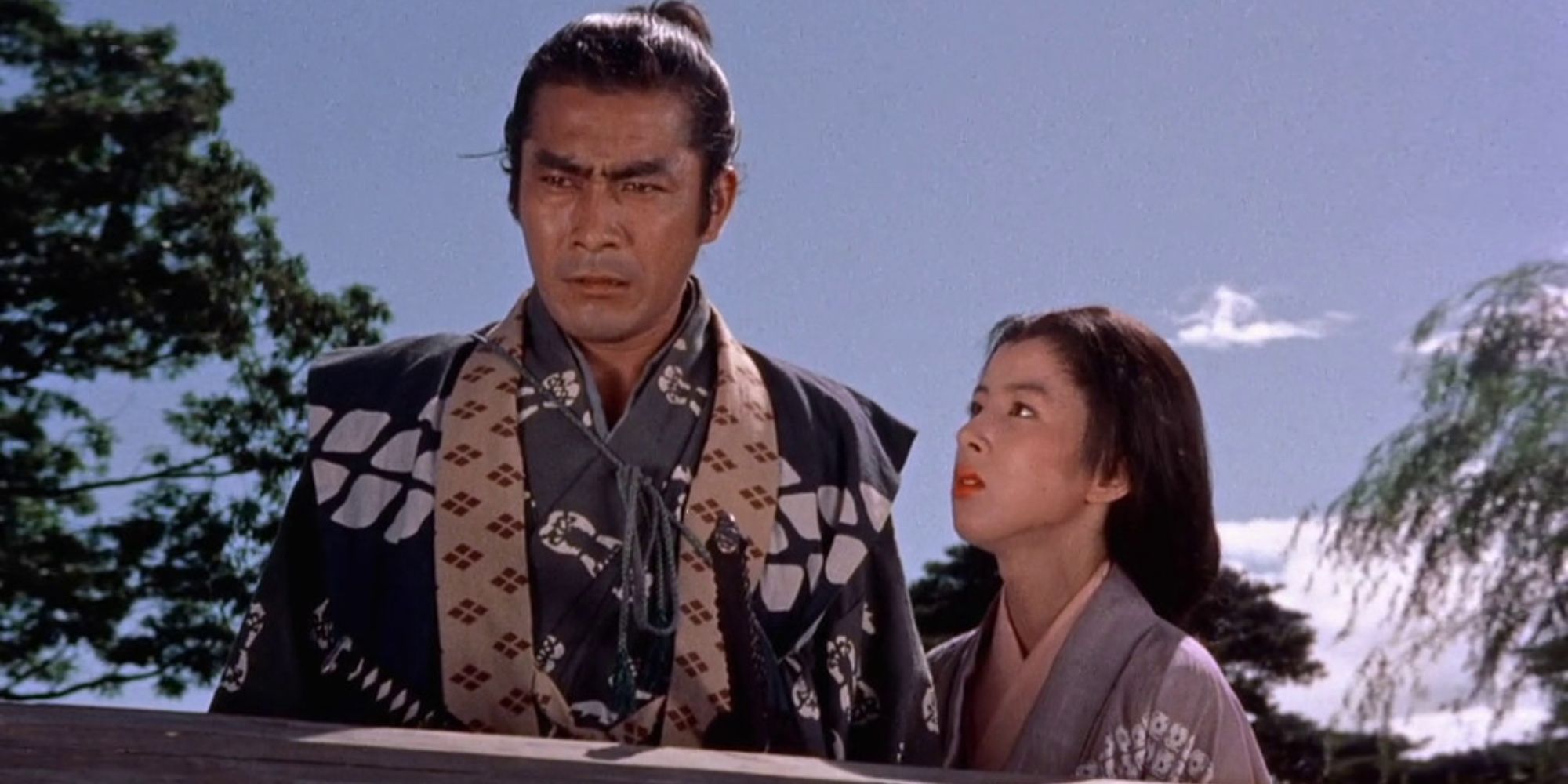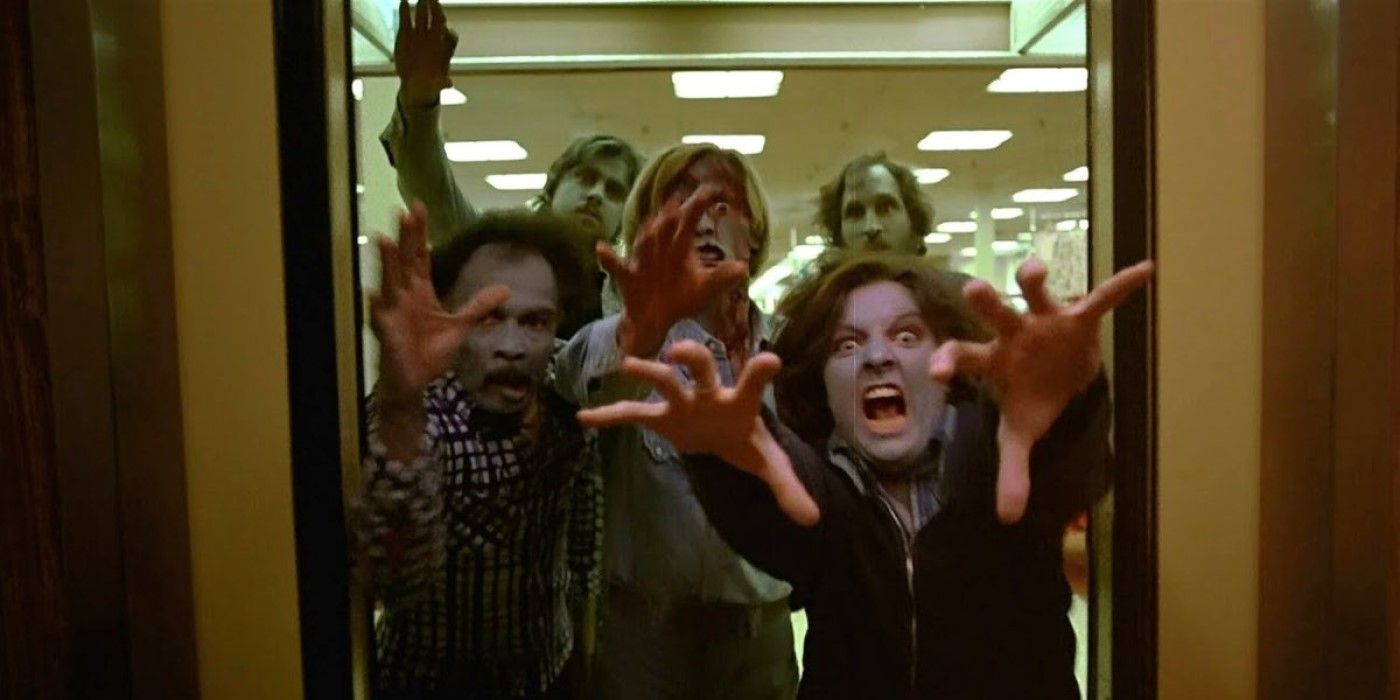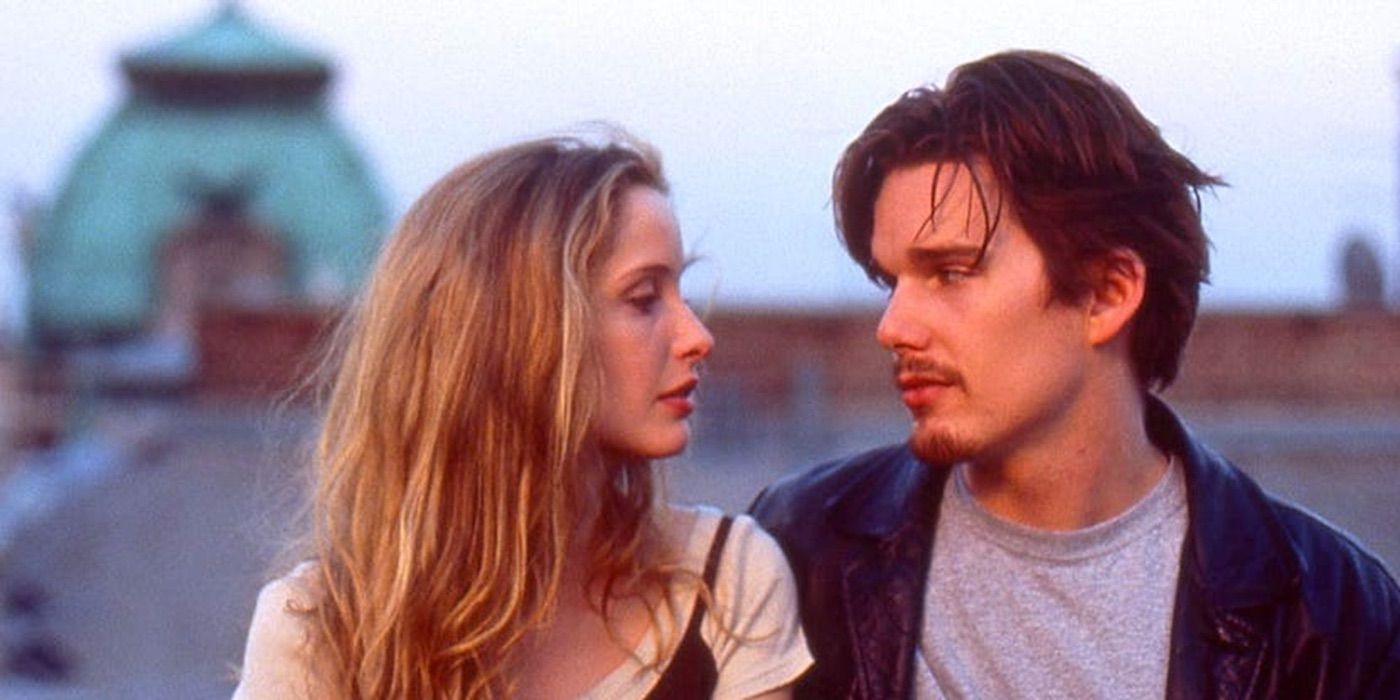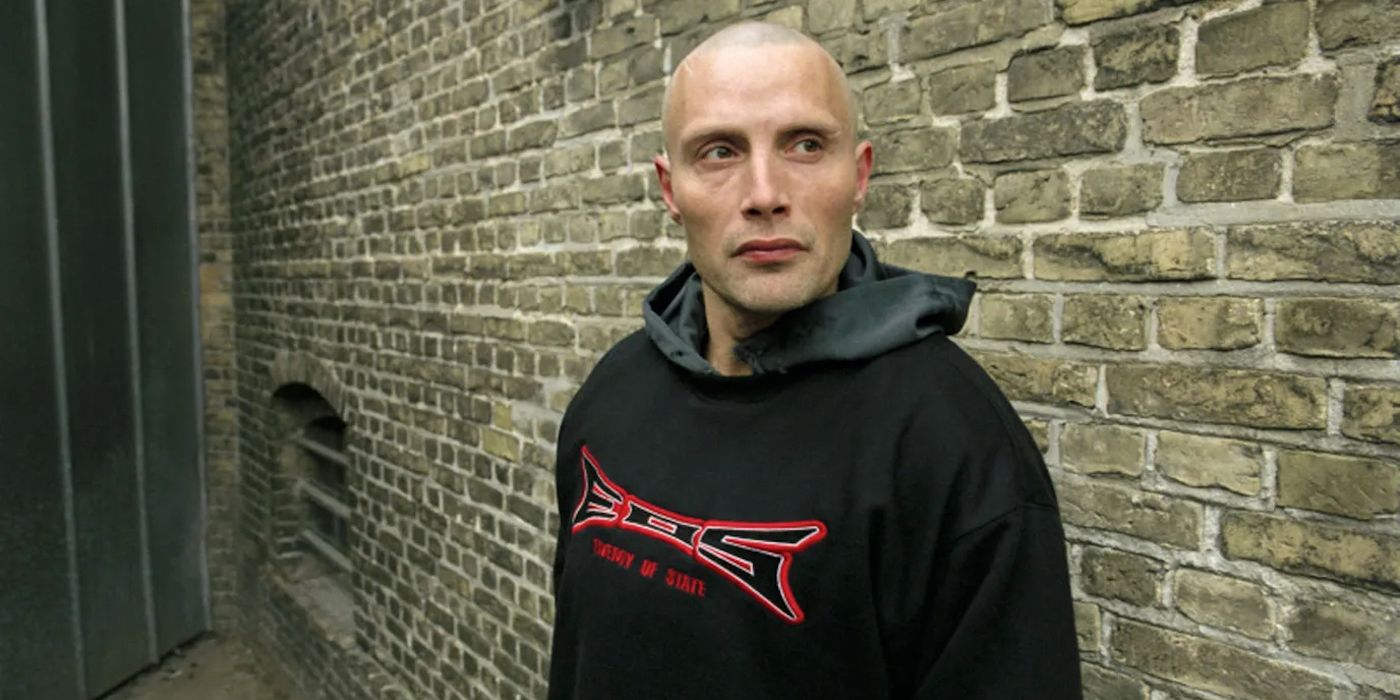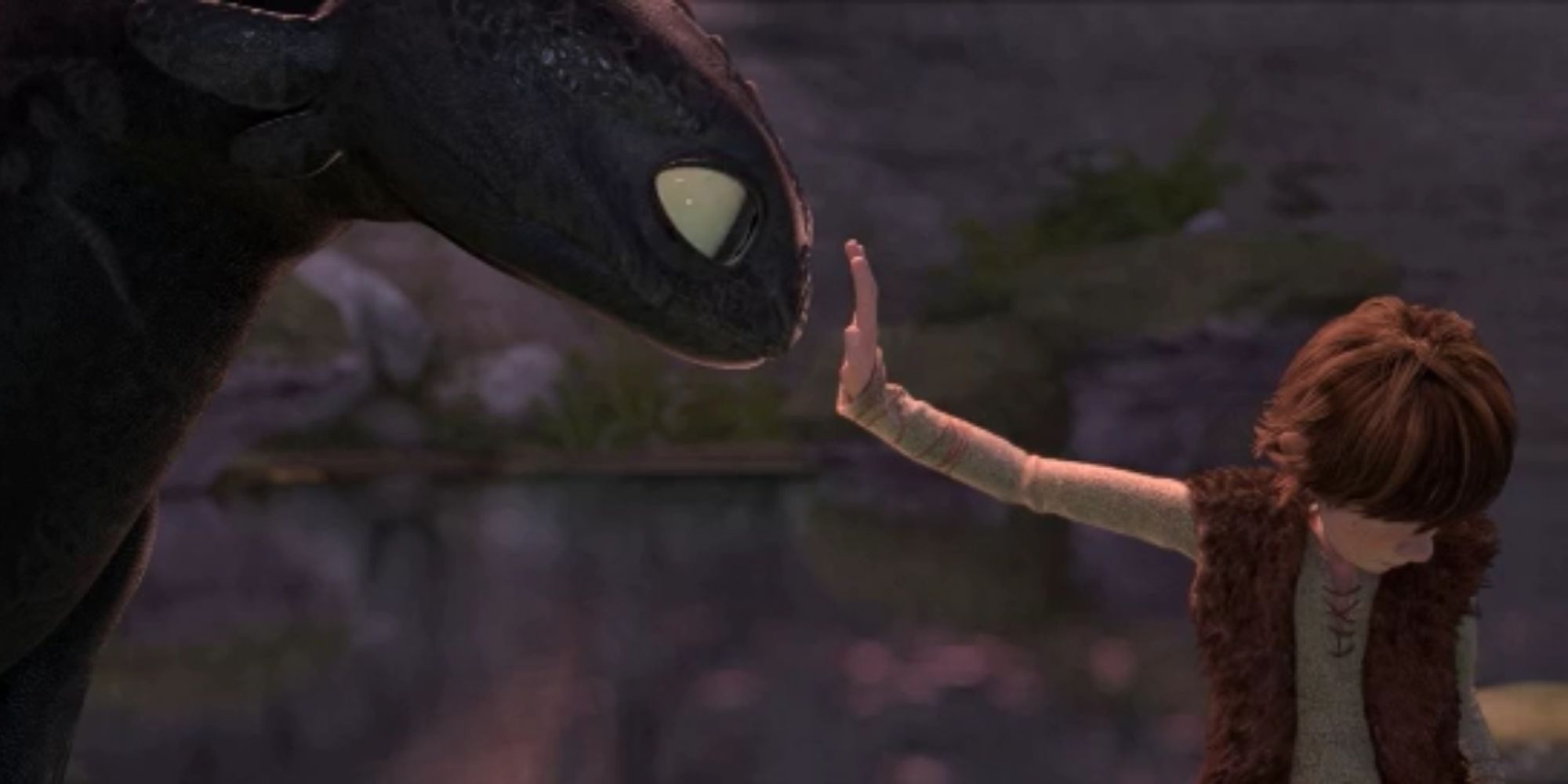[ad_1]
True trilogies are becoming something of a rarity in Hollywood. What was once considered the classic template for a film series to follow to tell a complete story has since faded, thanks to the emergence of cinematic universes and legacy sequels. Among those trilogies that remain, a select few are often considered masterpieces. From the original Star Wars trilogy to Sergio Leone‘s spaghetti Western Dollars trilogy, any list of the greatest three film series will generally cover the same well-trodden ground.
Beyond these classic trios, however, there are several trilogies that deserve to be in the masterpiece conversation. Despite all of these trilogies garnering warm critical receptions and devoted fan bases, they all still seem to be left out in the cold when it comes to discussions of the greatest film trifectas. These are six true trilogies that pulled off a hat-trick with three quality films that could be collectively called masterpieces.
7
The Samurai Trilogy
‘Samurai I: Musashi Miyamoto’ (1954), ‘Samurai II: Duel at Ichijoji Temple’ (1955) and ‘Samurai III: Duel at Ganryu Island’ (1956)
Based on the epic Japanese novel Musashi, Hiroshi Inagaki‘s Samurai trilogy stars legendary actor Toshiro Mifune as Miyamoto Musashi, a real-life swordsman of legendary skill. Across the three films, the journey of the legendary man is charted as he grows from an impulsive young warrior into a wisened samurai. Mifune is, as expected, excellent in all three films as the character becomes more and more disillusioned with the samurai way of life. Shot in glorious Eastmancolor, all three movies are spectacles to behold, punctuated by terrific sword fights that are beautifully photographed by Jun Yasumoto for the first two entries and Kazuo Yamada in the final.
The first film won an Academy Award for Best Foreign Language Film, but all three represent some of the finest examples of samurai cinema and are among the genre’s most entertaining. Despite the trilogy’s acclaim and availability on physical media thanks to a proper release by Criterion, it remains underrated among some of the more well-recognized samurai epics, at least among American audiences. With sumptuous visuals, action that remains thrilling over 70 years later, and a strong central performance from one of Japan’s greatest actors, the Samurai trilogy deserves a spot on the shelf next to Star Wars, which itself owes a major debt to the entire genre of samurai epics.
6
The Dead Trilogy
‘Night of the Living Dead’ (1968), ‘Dawn of the Dead’ (1978) and ‘Day of the Dead’ (1985)
George A. Romero basically invented the modern zombie film with his essential classic Night of the Living Dead, and he followed that movie with two subsequent undead classics that together represent his true masterpieces. Chronicling the downfall of humanity from the very beginning of the dead rising to the last remnants of society living a subterranean existence, the movies offer a bleak window into human nature. Romero infuses each film in this loosely connected trilogy with social satire, which often offers a brief comedic reprieve from the onslaught of the undead that lurk around every corner. The director would later make another trilogy of zombie films throughout the new millennium, and each of his original three would be given remakes, but none can match the power of the best zombie trilogy ever made.
The first film is set almost entirely in a farmhouse as a group of survivors tries to make sense of the undead apocalypse that seems to be unfolding all around the world. It famously stars Duane Jones, a Black actor, in the lead role at a time when that was a rarity in both horror and mainstream cinema. The ending of Night still manages to shock even in the modern era, and the first sequel, Dawn of the Dead, ups the ante, bringing the gore into startling color and setting the action in a mall. The final film of the trilogy, Day of the Dead, is easily the bleakest and features several histrionic performances, but also is the best showcase of Tom Savini‘s incredible make-up effects and also introduces the greatest zombie character of all time: Bud.
5
The Back to the Future Trilogy
‘Back to the Future’ (1985), ‘Back to the Future Part II’ (1989) and ‘Back to the Future Part III’ (1990)
While the Back to the Future franchise may be considered among the most essential film trilogies, most viewers would stop short of calling it a masterpiece. The first film, certainly, has earned that title, but the two sequels have generally gained a reputation for being good but disappointing. That seems unfair given the near-mythic status the first film has as one of the best-written comedies ever made, and even more so considering there is more creativity and pure movie magic on display in the two sequels than in most major blockbusters of the last decade. Of the two sequels, Part II has undergone the greatest reappraisal over time, thanks to its wild plotline that takes full advantage of its time-travel premise.
Set across three distinct timelines, Part II gives audiences a wonderfully idealistic future replete with hoverboards and flying cars (two promises that have yet to be fulfilled), a dystopic alternate 1985 where franchise villain Biff has become filthy rich and bears a resemblance to a certain current president. In an ingenious use of the time travel mechanic, the third act runs parallel to the events of the first film in 1955. Part II may not hit the emotional highs of the first film, but it is wildly entertaining from start to finish. Part III, the black sheep of the franchise, sets Doc and Marty back in the Old West, a setting that director Robert Zemeckis had always wanted to make a movie in and saw an opportunity to do so by making it a part of his massively successful franchise. Part III may not be as inventive as its predecessor, but it’s still a rootin’ tootin’ good time that is a fun cap on an entertaining trilogy.
4
The Before Trilogy
‘Before Sunrise’ (1995), ‘Before Sunset’ (2004) and ‘Before Midnight’ (2013)
Richard Linklater’s timeless romantic trilogy is one of the most honest depictions of a relationship ever put to film. Each film is set on a single day, with all three being made nine years apart, and chronicles the lives of Jesse and Celine (Ethan Hawke and Julie Delpy) as they meet, reconnect, and eventually become a family together. The films are minimalist romances, consisting mostly of lengthy scenes of dialogue between the two characters, but the writing is so sharp and the performances so natural that the films never feel perfunctory or boring.
The first film was inspired by Linklater’s personal experience with a woman he met by chance and spent a single evening with, and from that initial spark, the director crafted a fictional couple through which he could explore the possibilities of a relationship he experienced for only one night. Together with Hawke and Delpy, who served as co-writers on the latter two films, Linklater developed the characters further and further as he returned to them for each subsequent film. Watching the three films back to back, one becomes so absorbed that it feels personal, as if watching two friends from afar as they deal with all the intricacies that come with postmodern romances. The films were all critically acclaimed but may be too low-key to ever be considered alongside the more extravagant trilogies. Alas, they are just as emotionally moving and exciting as any big-budget blockbuster.
3
The Pusher Trilogy
‘Pusher’ (1996), ‘Pusher II’ (2004) and ‘Pusher III’ (2005)
The Danish crime thriller Pusher put avant-garde filmmaker Nicolas Winding Refn on the map. The film follows low-level drug dealer Frank as he goes on an odyssey through the Copenhagen underworld to try and pay off a debt to a dangerous gangster after a drug deal goes wrong. The film is a frenetic and gritty thriller that could stand proudly next to the best international gangster films, and its two sequels are even better. Pusher II focuses on Mads Mikkelsen‘s character from the first film as he gets released from prison and tries to acclimate to life on the outside while contending with his criminal father and becoming a father to a child he was unaware existed.
The third film in the trilogy features gangster Milo, the villain of the first film, as he struggles with sobriety while maintaining his drug empire and preparing for his spoiled daughter’s birthday party. Taken together, the trilogy is an epic saga of criminals and their never-ending attempts to better their lives and the violent events that often drag them back down. The films rightly brought Refn and stars like Mikkelsen into the international spotlight, and their careers have since made good on the promise shown in the Pusher trilogy tenfold. The trilogy is widely available across streaming and is mandatory viewing for any fans of the crime genre.
2
The Cornetto Trilogy
‘Shaun of the Dead’ (2004), ‘Hot Fuzz’ (2007) and ‘The World’s End’ (2013)
After collaborating on the cult comedy series Spaced, director Edgar Wright and stars Simon Pegg and Nick Frost would re-team for one of the best zombie movies not made by George A. Romero. Shaun of the Dead was an international hit, catapulting all three men to fame, and they would follow it up with two more films for their Cornetto Trilogy, so named for the ice cream treats that appear in all three films. While Shaun played on the tropes of the zombie and horror genres, Hot Fuzz took aim at Hollywood action movies and The World’s End at alien invasion cinema.
Each film is a unique beast, but all feature the same slick directorial style of Wright, along with clever scripts by the director and Pegg, and star Pegg and Frost in some bromantic combination. All three movies make for an incredibly entertaining triple feature, and picking a favorite is much like picking an ice cream flavor; it all comes down to personal taste. Both Shaun and Fuzz have been regarded as minor masterpieces, just as good as the best films of the genres they satirize, but The World’s End shouldn’t be slept on as it contains Pegg and Frost’s best performances by far and has a much more dramatic undercurrent to it that makes for even deeper viewing upon multiple necessary rewatches.
1
The How to Train Your Dragon Trilogy
‘How to Train Your Dragon’ (2010), ‘How to Train Your Dragon 2′ (2014) and How to Train Your Dragon: The Hidden World’ (2019)
The first film in the How to Train Your Dragon franchise was an incredible surprise to all viewers who were expecting another shallow comedy reliant on pop culture references, courtesy of DreamWorks Animation. The film turned out to be the furthest thing from the studio’s previous output. The humor and slapstick were still present, but underneath that was a thematically rich tale of surprising emotional depth. Set in a fantasy Viking world where dragons darken the skies, it follows Hiccup, the meek son of the warrior chieftain who doesn’t have his father’s same lust for dragon blood, a fact which only becomes more complicated after he befriends a rare dragon he names Toothless.
The relationship between Hiccup and Toothless is what gives the first film resonance, and it only deepens in the second and third films as they explore new worlds and expand character relationships. By far DreamWorks’ best animated trilogy (Kung Fu Panda got itself disqualified by adding a fourth film), How to Train Your Dragon quickly gained a legion of devoted fans, enough that the recent live-action remake both inspired online outrage and managed to slay at the box office.
[ad_2]
